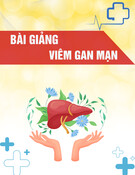
15
Journal of Medicine and Pharmacy, Volume 11, No.07/2021
Vietnamese anesthesiologists training about emergency front of neck
access in the cannot intubate - cannot oxygenate crisis
Dam Thi Phuong Duy1*, Nguyen Van Minh1, Andrew Choyce2, Sara Ko2
(1) Hue University of Medicine and Pharmacy, Hue University, Vietnam
(2) Orbis International
Abstract
Background: Emergency front of neck access (eFONA) is the last resort in the Cannot Intubate - Cannot
Oxygenate (CICO) crisis. The presence of an algorithm and a well-trained team have been recognized as
being essential in reducing errors to achieve a positive outcome. The objective of this study was to evaluate
the current situation regarding training, experience and availability of the various means of managing CICO
and eFONA in Vietnamese hospitals. Methods: We sent out a link for a 10-question electronic survey to
lead anaesthesiologists who subsequently distributed the link to their staff. This was followed by a paper
questionnaire at the anaesthesia conference in Hue City. Results: 49.3% of anesthetists are aware of local
guidelines in their hospital compared to 69.5% being aware of international guidelines. Only 90 (29.8%)
respondents felt they could manage the CICO/eFONA crisis with confidence. Some form of training in
managing a CICO crisis has been received by two thirds of respondents (203, 67.2%). Only 88 (29.1%)
respondents had received any hands-on simulation training. The majority of participants agreed that some
form of compulsory training for CICO/eFONA would be appropriate (98.7%, 298/302). Conclusion: There was
a shortage in training, the experience of anesthetists and availability of the various means of managing CICO
and eFONA in Vietnamese hospitals. Simulation training should play a vital part in this situation.
Keywords: CICO, eFONA, training and equipment.
1. INTRODUCTION
Acquiring the skills of airway management is a
fundamental part of anesthesia training in every
country. Research and technological development
mean that all anesthesia providers need to keep
their knowledge and skills updated [1].
With advanced training and experience,
there remains the remote possibility that an
unanticipated difficulty with airway management
may progress to failure to deliver oxygen resulting
in hypoxic brain damage and death [2]. Emergency
front of neck access (eFONA), also referred to as the
emergency airway, is the last resort in the cannot
intubate cannot oxygenate (CICO) crisis [3]. In a
stressful situation, the presence of an algorithm and
a well-trained team have been recognized as being
essential in reducing errors to achieve a positive
outcome. Simulation-based training based on these
has been shown to enhance patient safety.
Several countries have now introduced national
guidelines and algorithms for managing the
unanticipated difficult airway [4]. Although there
remains some debate about the best method of
gaining emergency airway access in such an algorithm,
regular simulation-based training in the CICO scenario
has been demonstrated to increase success rates [5].
In the world, training about emergency front of
neck access in the COCI situation has been researched
and published [1], [6], [7]. However, in Vietnam, there
are no reports and studies on this issue at the time of
writing. Therefore, we have set out to evaluate the
current situation regarding training, experience and
availability of the various means of managing CICO and
eFONA in Vietnamese hospitals.
2. METHODS
This study used a cross-sectional design and
a convenience sample of 420 anesthesiologists
regardless of the number of years of experience.
We designed a questionnaire including 10
questions (Appendix 1). From 10th October to 10th
December 2019, the questionnaire was sent to the
participants by email or paper. The data was collected
and analyzed at the end of December 2019 in Excel.
We surveyed the level of training, knowledge
of guidelines for managing CICO and confidence
to perform eFONA. We then asked about the
experience of formal training in CICO/eFONA and
their opinion of the appropriate frequency of
training. Finally, we asked what equipment was
immediately available for managing CICO/eFONA in
respondents’ hospitals.
Corresponding author: Dam Thi Phuong Duy, email: phuongduy10293@gmail.com
Received: 24/3/2021; Accepted: 25/10/2021; Published: 30/12/2021
DOI: 10.34071/jmp.2021.7.2





















